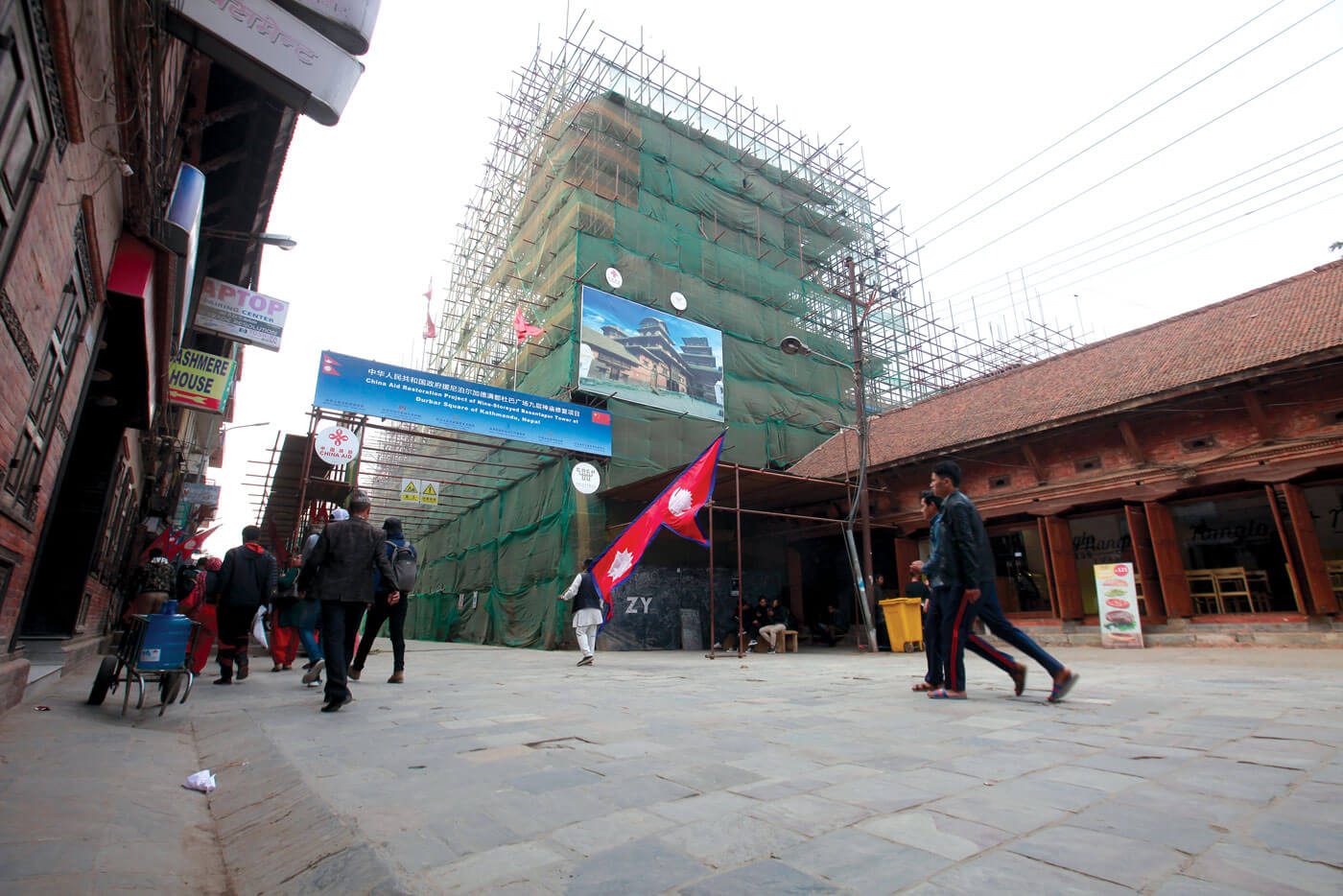Measuring what matters
Nepalis have rebuilt after every natural calamity of the past, but this time we got foreigners to do it for usNepalis have rebuilt after every natural calamity of the past, but this time we got foreigners to do it for us

When the world has no more problems and challenges to resolve, we shall all have only three professions to choose from: art, music and cooking.
Proof of that are found in the lanes and courtyards of the ancient towns of Kathmandu Valley. We have done well on all three fronts. Our cultural and natural heritage of the Valley was once the envy of the world, and people came to experience and study them.
Then it became, and still is, an exotic tourist destination. The earthquake of 2015 destroyed over 700 of these globally unique monuments and people are not so sure if they will ever be restored again. One challenge is that the people who have been put in charge of the agencies dedicated for the purpose have no love for this culture, and seem to think wide roads and high rises are more important to turn this ancient civilisation into a modern metropolis.
Then there are the landlords who calculate that the more floors they can add on top of their precarious buildings, more rooms they can rent out. There is virtually no regard for heritage features.
The third is another section of society which is now really good at begging. They are dependent on outsiders to fix whatever is broken or not working in this country. The way Bouddha was restored in record time with local resources and leadership is a real threat to this group that depends on handouts.
In each of the above we are measuring the wrong indices: how wide is the street, how much more can I earn in rent each month, and the size of the foreign grant for restoration. Kathmandu valley’s heritage is being smothered, and this attitude could be the final nail in its coffin.
There are two challenges to heritage restoration that are critical: one is the land trust that historically provided the perpetual (annual) payment in grain to the artists, and secondly the guilds that were well organised for centuries to provide the needed skilled and knowledgeable human resources to carry out the restoration work on a regular basis.
The feudal state system of the past 250 years ‘nationalised’ a lot of the land to maintain the Jagir system, and the process continues today to expand roads, build offices/barracks and other infrastructure. There is a section of Nepali society that cannot tolerate trees, open spaces and wetlands. They do not see Rani Pokhari as water storage and recharge system, but see it as prime real estate to enrich themselves and their political bosses.
Our country is so great that we have foreigners build us toilets, schools and health posts. They provide us garbage trucks and ambulances. Now, we are seeing our monuments being rebuilt with foreign aid (picture of Hanuman Dhoka, above). Within the next 100 years, there will surely be another earthquake or another manmade disaster. It is scary and sad to think that the restoration we see of our monuments today could well be the last time they are rebuilt. It has happened to many cities and civilisations all over the world, and our heritage is next in line.
Unless politicians wake up to see that Nepalis have been rebuilding by themselves after every natural calamity of the past, not much will change.
The tourism sector also needs to realise that it depends on having these monuments and the cultural heritage preserved into the future by ourselves.
Perhaps UNESCO will one day wake up to the fact that it has no work in Nepal because there are no more monuments to monitor and write emails about. What will happen if the young artists say we shall not give up without a fight? These monuments, the city, the culture and identity of an entire population will disappear if we are not willing to resist the forces bent upon destroying them.
It will be a difficult uphill battle, but it can be done. The people of Bhaktapur have shown leadership in conservation for decades, and Patan is doing it now. The people of Khokana are organising to defend heritage sites against infrastructure development.
We do not have to wait long to see which side will prevail. The question is: which side are you
on?
Anil Chitrakar is President of Siddharthinc.
Read Also:
A monumental rivalry, Om Astha rai
Tangible restoration, Sahina Shrestha

writer




